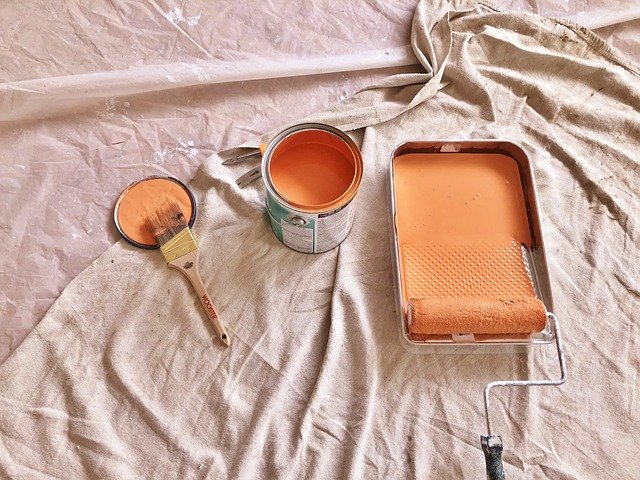Hardwood Flooring: Materials, Design Trends, and Installation Considerations
Hardwood flooring remains one of the most sought-after flooring options for homeowners and designers alike, offering timeless appeal and exceptional durability. Natural wood floors bring warmth, character, and value to any space while providing a foundation that complements virtually any interior design style. Understanding the various aspects of hardwood flooring—from material types and finishes to installation requirements and environmental considerations—can help homeowners make informed decisions when selecting this classic flooring option for their spaces.

Types of Hardwood Flooring Materials and Finishes
Hardwood flooring comes in numerous species, each with distinct characteristics that affect both aesthetics and performance. Oak remains the most popular choice due to its durability and versatility, available in both red and white varieties. Red oak offers warm tones with pronounced grain patterns, while white oak provides cooler tones and greater resistance to moisture. Maple delivers a consistently light appearance with subtle grain patterns, making it ideal for contemporary spaces. For those seeking exotic options, Brazilian cherry offers rich reddish tones that deepen over time, while walnut presents deep chocolate hues perfect for creating dramatic interiors.
Finishes significantly impact both the appearance and maintenance requirements of hardwood floors. Traditional oil-based polyurethane creates a warm amber glow and durable surface but requires longer drying times. Water-based polyurethane maintains the natural wood color and dries quickly with lower VOC emissions. Oil finishes penetrate the wood for a natural matte appearance but require more frequent maintenance. Meanwhile, aluminum oxide finishes offer exceptional durability for high-traffic areas, and UV-cured finishes provide immediate curing with minimal downtime during installation.
Design Trends and Interior Uses of Hardwood Flooring
Current hardwood flooring design trends emphasize authenticity and character. Wide planks (7 inches or wider) continue gaining popularity, creating fewer seam lines and showcasing more of the wood’s natural character. Wire-brushed and hand-scraped textures that highlight the wood grain have replaced perfectly smooth surfaces in many modern installations. Matte and satin finishes have largely overtaken high-gloss options, offering a more natural appearance while better concealing scratches and dust.
In terms of color preferences, designers report growing interest in both extremes—very light blonde woods and nearly black stained options—while medium brown tones remain timeless choices. Mixed-width installations that incorporate planks of varying widths create visual interest, while herringbone and chevron patterns are experiencing a renaissance, particularly in formal spaces and transitional zones. For open-concept homes, consistent hardwood flooring throughout living spaces creates visual flow while defining spaces with area rugs allows for design flexibility.
Environmental Considerations and Sustainable Hardwood Options
Sustainability has become a crucial consideration in hardwood flooring selection. Forest Stewardship Council (FSC) certification ensures wood comes from responsibly managed forests with environmental, social, and economic benefits. Reclaimed hardwood, sourced from old barns, factories, and other structures, offers unique character while giving new life to existing materials. Engineered hardwood, which uses a thin veneer of real wood over stable plywood layers, reduces the amount of slow-growing hardwood needed while often offering better dimensional stability.
Bamboo, though technically a grass, provides a rapidly renewable alternative with similar hardness to traditional hardwoods when properly manufactured. Cork flooring, harvested from the bark of cork oak trees without harming the tree, offers a sustainable option with natural insulating and sound-dampening properties. Additionally, many manufacturers now use water-based finishes and adhesives with low volatile organic compounds (VOCs), significantly improving indoor air quality compared to traditional solvent-based products.
How Humidity and Climate Affect Hardwood Performance
Wood’s natural hygroscopic properties mean it absorbs and releases moisture based on environmental conditions, making humidity a critical factor in hardwood flooring performance. In high humidity environments, wood absorbs moisture and expands, potentially causing cupping (edges higher than centers) or crowning (centers higher than edges). Conversely, low humidity causes wood to release moisture and contract, potentially creating gaps between planks. Maintaining indoor relative humidity between 35-55% year-round helps minimize these seasonal changes.
Geographic location significantly impacts hardwood selection and installation methods. In consistently humid areas like coastal regions, engineered hardwood often performs better than solid hardwood due to its enhanced dimensional stability. Desert climates with extreme dryness may require humidification systems to prevent excessive shrinkage and cracking. For below-grade installations like basements, engineered hardwood or floating installation systems provide better protection against moisture than traditional solid hardwood with nail-down installation.
Common Mistakes to Avoid During Hardwood Installation
Proper installation is crucial for hardwood flooring performance and longevity. Skipping acclimation—the process of allowing wood to adjust to the home’s environment before installation—frequently leads to expansion or contraction problems later. Industry standards typically recommend acclimating hardwood for a minimum of 3-5 days in the space where it will be installed. Inadequate subfloor preparation, including failing to check for flatness, moisture content, and structural integrity, can result in squeaking, bouncing, or premature deterioration.
Using incorrect fasteners or adhesives for the specific flooring type can compromise the installation’s integrity. Solid hardwood typically requires specific nails or cleats, while engineered products may need special adhesives or floating floor systems. Improper spacing around the perimeter—typically 1/2 inch—prevents natural expansion and contraction, potentially causing buckling or floor failure. Finally, applying finish before proper curing or rushing between finish coats often results in adhesion problems, bubbling, or uneven sheen that requires costly refinishing to correct.
Understanding these key aspects of hardwood flooring—from material selection and design applications to environmental considerations and installation requirements—helps ensure successful outcomes for this significant home investment. By avoiding common pitfalls and making informed choices based on specific environmental conditions and usage patterns, homeowners can enjoy the timeless beauty and durability of hardwood floors for generations.




